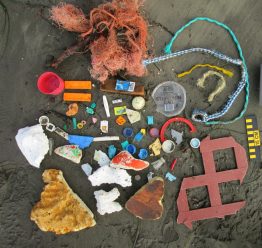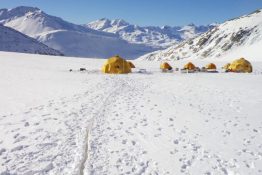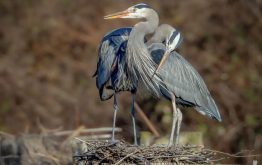Record-breaking heat waves have occurred recently from Delhi to the Pacific Northwest, and the number of these deadly events is expected to increase. New research from the University of Washington and Harvard University gives a range of heat impacts worldwide by the end of this century, depending on future emissions of greenhouse gases. The study was published Aug. 25 in the open-access journal Communications Earth & Environment.
Read more at UW News »Beach trash accumulates in predictable patterns on Washington and Oregon shores
Citizen scientists recorded trash on Pacific Northwest beaches, from southern Oregon to Anacortes, Washington, to contribute to the growing study of marine trash. A study by the University of Washington analyzed 843 beach surveys and found that certain beaches, and certain areas of a single beach, are “sticky zones” that accumulate litter. The study was published online Aug. 11 in Marine Pollution Bulletin.
Read more at UW News »New UW Photonic Sensing Facility will use fiber-optic cables for seismic sensing, glaciology and more
The fiber-optic cables that travel underground, along the seafloor and into our homes have potential besides transmitting videos, emails and tweets. These signals can also record ground vibrations as small as a nanometer anywhere the cable touches the ground. This unintended use for fiber-optic cables was discovered decades ago and has had limited use in military and commercial applications. A University of Washington pilot project is exploring the use of fiber-optic sensing for seismology, glaciology, and even urban monitoring.
Read more at UW News »Bird behavior influenced by human activity during COVID-19 lockdowns
A new University of Washington study led by Olivia Sanderfoot reports that many birds were just as likely to be found in highly developed urban areas as they were in less-developed green spaces during the peak of the COVID-19 lockdowns. The paper was published Aug. 11 in the journal Scientific Reports. “Our findings suggest that some birds may have been able to use more spaces in cities because our human footprint was a little lighter,” said Sanderfoot, who completed the study as a doctoral researcher in the UW School of Environmental and Forest Sciences and is now a postdoctoral scholar in the Department of Ecology and Evolutionary Biology at the University of California, Los Angeles.
Read more at UW News »New study calculates retreat of glacier edges in Alaska’s Kenai Fjords National Park
As glaciers worldwide retreat due to climate change, managers of national parks need to know what’s on the horizon to prepare for the future. A new study from the University of Washington and the National Park Service measures 38 years of change for glaciers in Kenai Fjords National Park, a stunning jewel about two hours south of Anchorage. The study, published Aug.
Read more at UW News »





